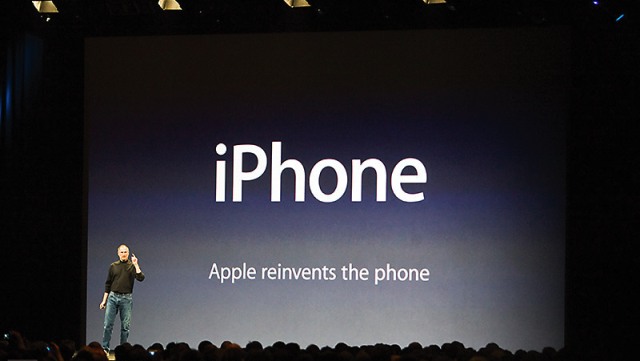In the wake of a second major Apple vs Samsung lawsuit in the U.S., Apple senior software engineer Greg Christie talked with The Wall Street Journal about the early days of the iPhone, revealing details that had not been shared with the world. After joining Apple in 1996 to work on the Newton, Christie said Scott Forstall drafted him into the iPhone team in late 2004. Called project “purple,” the device would be “a phone with an integrated music player, operated by touch screen.”
Only things were not going so great for the “shockingly small” team that was secretly developing the device. In February 2005, Steve Jobs gave the team an ultimatum: two weeks to show progress with the operating system, or have the project assigned to another group. “Steve had pretty much had it,” Christie said “He wanted bigger ideas and bigger concepts.”
The software team came up with several features that would end up in what’s known today as iOS, including the “slide to unlock” feature, placing calls from the address book, the touch-based music player, the bounce back effect when reaching the end of a page, or the conversation view of SMS messaging. Christie said the team “’banged their heads against the wall’ over how to change text messages from a chronological list of individual messages to a series of separate ongoing conversations similar to instant messaging on a computer.”
Other features were further added to the operating system, with Christie recalling how Jobs shot down an email split-screen view concept for the phone, with one window showing the sender’s information on one side, and the message on the other. “Steve thought it was foolish to do a split screen on such a small display,” Christie said.
For months, Christie made presentations twice each month to Jobs in a windowless room where only certain employees had access. Once he finally impressed Jobs, Christie made the same presentation to Bill Campbell and then to Jony Ive. Campbell said “the phone would be better than the original Mac,” while Ive, who was designing the glass for the device, was curious “how we were going to pull off the [software] magic trick.”
“With each demonstration, Mr. Jobs took over more of the narration, making the story his own,” the Journal writes. “His excitement for it was boundless,” Christie said.
The Journal also features an image that shows the iPhone demo room from 2006. “This is a system Apple rigged together to run early prototypes of its iPhone software in 2006,” the publication says about the picture above. “It tethered a plastic touch-screen device – code-named “Wallaby” – to an outdated Mac to simulate the slower speeds of a phone hardware.”
“It doesn’t mean that the windowless room, lit by fluorescent lights hanging from the ceiling, looked like anything special,” the Journal says in a second story about Apple’s secret room. “Christie recalled the walls had signs of water damage from a flood in an adjacent bathroom. A few images covered the walls including one of Apple’s ‘Think Different’ posters of famous graphic designer Paul Rand and another of a large chicken running around without its head.”
Not even cleaning personnel had access to the room, Christie recalls. And Jobs had strict requirements for at-home work as well, demanding that employees involved in project “purple,” use a computer “in a secluded part of the house to prevent anyone from accidentally seeing details,” and encrypt all digital images related to device.
Christie still works at Apple as head of the user interface team and is credited as one of the inventors of the slide to unlock feature, one of the patents in play in the Apple vs Samsung trial set to start on March 31.




